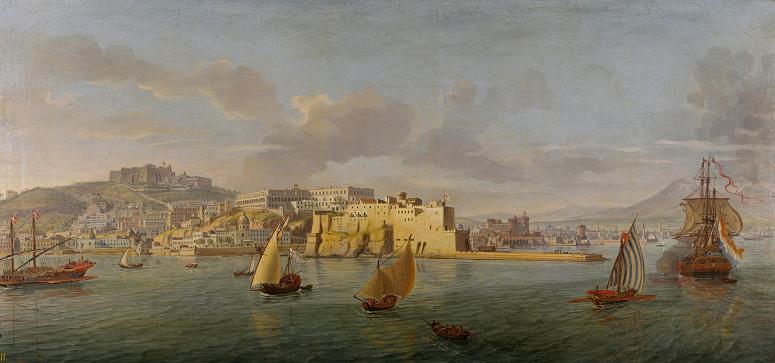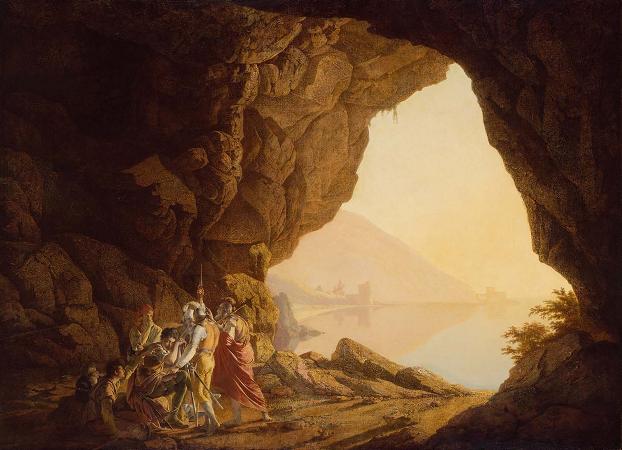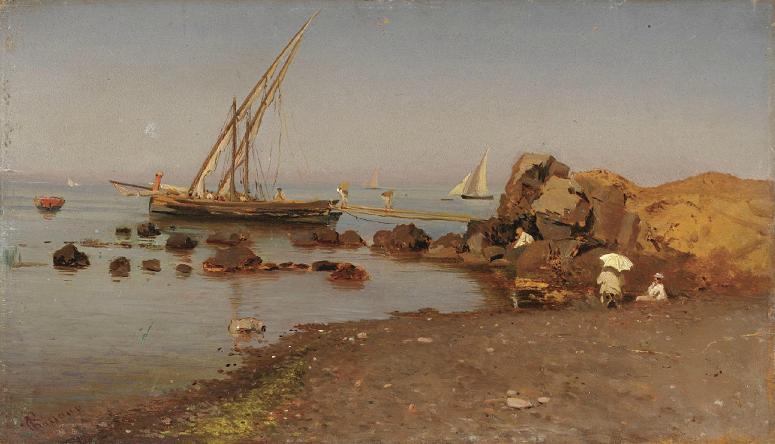Naples. Naples is the regional capital of Campania and the third-largest municipality in Italy after Rome and Milan. In 2017, around 967,069 people lived within the city's administrative limits while its province-level municipality has a population of 3,115,320 residents. Its continuously built-up metropolitan area is the second or third largest metropolitan area in Italy and one of the most densely populated cities in Europe. First settled by Greeks in the second millennium BC, Naples is one of the oldest continuously inhabited urban areas in the world. In the ninth century BC, a colony known as Parthenope or was established on the Island of Megaride, later refounded as Neápolis in the sixth century BC. The city was an important part of Magna Graecia, played a major role in the merging of Greek and Roman society and a significant cultural centre under the Romans. It served as the capital of the Duchy of Naples, then of the Kingdom of Naples and finally of the Two Sicilies until the unification of Italy in 1861. Naples is also considered a capital of the Baroque since the arrival of Caravaggio in the 17th century, and due to the artistic revolution his arrival occasioned. Between 1925 and 1936, Naples was expanded and upgraded by Benito Mussolini's government but subsequently sustained severe damage from Allied bombing during World War II, which led to extensive post-1945 reconstruction work. Naples has experienced significant economic growth in recent decades, helped by the construction of the Centro Direzionale business district and an advanced transportation network, which includes the Alta Velocitŕ high-speed rail link to Rome and Salerno and an expanded subway network. Naples is the third-largest urban economy in Italy, after Milan and Rome. The Port of Naples is one of the most important in Europe and home of the Allied Joint Force Command Naples, the NATO body that oversees North Africa, the Sahel and Middle East. Naples' historic city centre is the largest in Europe and a UNESCO World Heritage Site, with a wide range of culturally and historically significant sites nearby, including the Palace of Caserta and the Roman ruins of Pompeii and Herculaneum. Naples is also known for its natural beauties such as Posillipo, Phlegraean Fields, Nisida, and Vesuvius. Neapolitan cuisine is noted for its association with pizza, which originated in the city, as well as numerous other local dishes. Naples has the most stars from the Michelin Guide of any Italian city. The best-known sports team in Naples is the Serie A club S.S.C. Napoli, two-time Italian champions who play at the San Paolo Stadium in the southwest of the city, in the Fuorigrotta quarter. Main articles: History of Naples and Timeline of Naples history Main articles: Magna Graecia and Ancient Rome Naples has been inhabited since the Neolithic period. The earliest Greek settlements were established in the Naples area in the second millennium BC. Sailors from the Greek island of Rhodes established a small commercial port called Parthenope on the island of Megaride in the ninth century BC. By the eighth century BC, the settlement had expanded to include Monte Echia. In the sixth century BC the new urban zone of Neápolis was founded on the plain, eventually becoming one of the foremost cities of Magna Graecia. The city grew rapidly due to the influence of the powerful Greek city-state of Syracuse, and became an ally of the Roman Republic against Carthage. During the Samnite Wars, the city, now a bustling centre of trade, was captured by the Samnites; however, the Romans soon captured the city from them and made it a Roman colony. During the Punic Wars, the strong walls surrounding Neápolis repelled the invading forces of the Carthaginian general Hannibal. Naples was greatly respected by the Romans as a paragon of Hellenistic culture. During the Roman era, the people of Naples maintained their Greek language and customs, while the city was expanded with elegant Roman villas, aqueducts, and public baths. Landmarks such as the Temple of Dioscures were built, and many emperors chose to holiday in the city, including Claudius and Tiberius. Virgil, the author of Rome's national epic, the Aeneid, received part of his education in the city, and later resided in its environs.
more...














